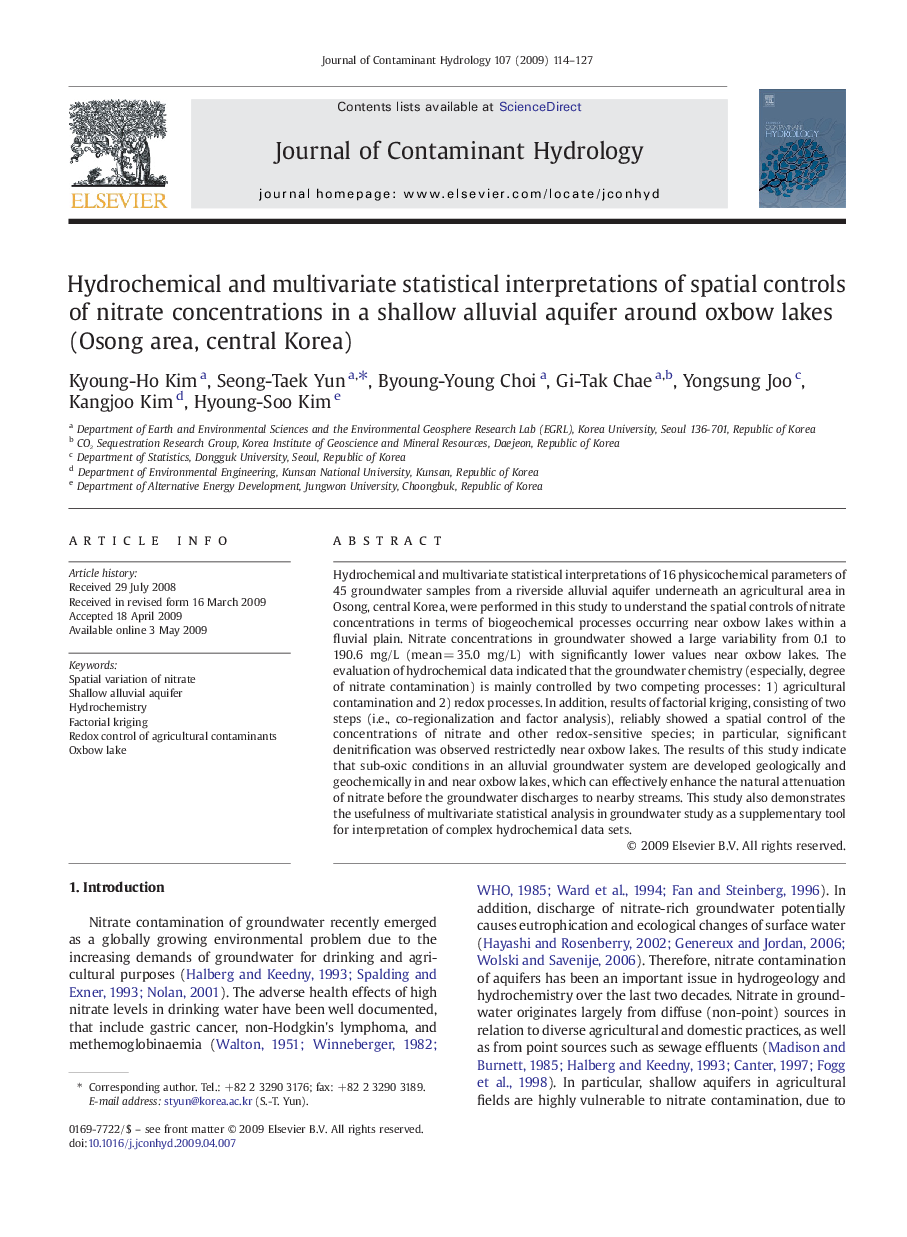| Article ID | Journal | Published Year | Pages | File Type |
|---|---|---|---|---|
| 4547207 | Journal of Contaminant Hydrology | 2009 | 14 Pages |
Hydrochemical and multivariate statistical interpretations of 16 physicochemical parameters of 45 groundwater samples from a riverside alluvial aquifer underneath an agricultural area in Osong, central Korea, were performed in this study to understand the spatial controls of nitrate concentrations in terms of biogeochemical processes occurring near oxbow lakes within a fluvial plain. Nitrate concentrations in groundwater showed a large variability from 0.1 to 190.6 mg/L (mean = 35.0 mg/L) with significantly lower values near oxbow lakes. The evaluation of hydrochemical data indicated that the groundwater chemistry (especially, degree of nitrate contamination) is mainly controlled by two competing processes: 1) agricultural contamination and 2) redox processes. In addition, results of factorial kriging, consisting of two steps (i.e., co-regionalization and factor analysis), reliably showed a spatial control of the concentrations of nitrate and other redox-sensitive species; in particular, significant denitrification was observed restrictedly near oxbow lakes. The results of this study indicate that sub-oxic conditions in an alluvial groundwater system are developed geologically and geochemically in and near oxbow lakes, which can effectively enhance the natural attenuation of nitrate before the groundwater discharges to nearby streams. This study also demonstrates the usefulness of multivariate statistical analysis in groundwater study as a supplementary tool for interpretation of complex hydrochemical data sets.
